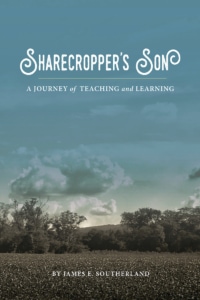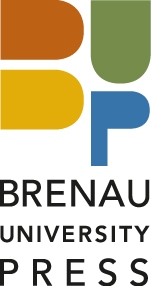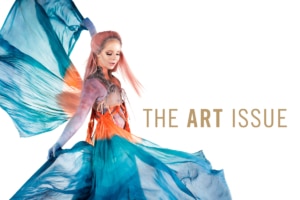The Art of History
In almost half a century in the classroom, Jim Southerland used whatever tools he could find to make history come alive for his students. At Brenau, the arts always seemed to be just the thing.
My role as a teacher was merely a continuation of my lifelong role as a student. It is a fitting analogy to say I was a “sharecropper” in all of those classrooms, producing what I could for the benefit of the students for whom I worked while keeping a portion for my own growth and sustenance.
 One of the things I learned is that history links nicely to all the arts, and I attempted to bring art, literature and music into world civilization studies and other history classes that I taught. When I discussed the Spanish insurrection against Napoleon’s forces in 1808, I included Francisco Goya’s painting “The Third of May,” which commemorates the Spanish resistance to French occupation. I showed Goya’s portrait of Spanish King Charles IV’s wife, Maria Luisa, and explained why the artist depicted her in such an unflattering manner – King Charles liked to tinker with clocks while Queen Maria liked to tinker with other men.
One of the things I learned is that history links nicely to all the arts, and I attempted to bring art, literature and music into world civilization studies and other history classes that I taught. When I discussed the Spanish insurrection against Napoleon’s forces in 1808, I included Francisco Goya’s painting “The Third of May,” which commemorates the Spanish resistance to French occupation. I showed Goya’s portrait of Spanish King Charles IV’s wife, Maria Luisa, and explained why the artist depicted her in such an unflattering manner – King Charles liked to tinker with clocks while Queen Maria liked to tinker with other men.
The propaganda art of Jacobin painter Jacques-Louis David and his masterpiece,“Death of Marat,” I usually included in my French Revolution classes. The influence of the mural paintings of Diego Rivera, José Clemente Orozco and other muralists of the Mexican Revolution of 1911 made it into my Latin American history course. The illiterate masses could see their history graphically represented in those murals painted on walls of public buildings.
In U.S. history classes I asked students to contrast Paul Revere’s engraving of the Boston Massacre with another contemporary drawing by an unknown artist. The differences are remarkable and very telling. Revere’s patriotic version is nothing short of propaganda, with its image of innocent, well-dressed Bostonians murdered by British soldiers. The unknown person’s sketch conversely shows an angry crowd with men in tattered clothing wielding clubs. The men are led by a black man, presumably Crispus Attucks, the first person killed when the shooting started, and Americans seem poised to attack the Brits.
When teaching the background events leading to World War II, I talked about the Spanish Civil War, seen by many as a “rehearsal” for World War II. No such discussion is complete without injecting Pablo Picasso’s painting “Guernica,” one of the most effective antiwar paintings in existence.
[Teaching world civilization with art] begins with early examples of primitive sculptures and cave paintings, which were the only “written” records by human beings about their early lives on the planet. That quite naturally carries through the Middle Ages and the Renaissance and into the modern art forms of the 20th and 21st centuries.
Literature also aids enormously in teaching history, providing great insight even through works of fiction merely set against great events take literary license with fact for convenience of the narrative. I believe if you pique students’ interest with a novel, they may invest themselves in a bit of impromptu personal research to learn how true the story really is and probably learn more about the event than they would have ever absorbed in a classroom lecture or in textbook reading. In the Vietnam course I often required Philip Caputo’s “A Rumor of War” and Tim O’Brien’s “The Things They Carried.” In Southern history I usually allowed students to pick from a number of works by William Faulkner, Eudora Welty, Tennessee Williams, Lillian Smith, Ralph Ellison, Zora Neale Hurston and many others.
Music also reflects history. “La Marseillaise,” now the French national anthem, became the rousing fight song for French revolutionaries after its introduction in the 1790s, so it definitely fit with class discussions. Likewise, Tchaikovsky’s “1812 Overture” enhances studies of Napoleon’s invasion of Russia, particularly with the strains of “La Marseillaise” and the Russian anthem “God Save the Czar” emerging almost cacophonously as the composer has the two armies collide.
A favorite teaching tool I used to explain events in post-World War II America was Billy Joel’s 1989 hit song “We Didn’t Start the Fire.” Lyrics include brief stream-of-consciousness, rapid-fire allusions to the headline events between 1949, the year Joel was born, and 1989, when the song was released. He wrote the lyrics after hearing someone say to him that nothing happened in the 1950s. It was an unusual and fun method of introducing serious topics such as the Korean War, the rise of communism in Asia, McCarthyism and the fall of Indochina. Also, I introduced some popular culture with Joel’s allusions to Johnnie Ray, Doris Day and Joe DiMaggio. In my best imitation of the emotionally uninhibited singer Ray, I would sing a few lyrics of his hit song “Cry.”
Even Hollywood movies that take liberties with historical fact or are pure fiction could advance [classroom] discussion. My French Revolution lectures included excerpts from “A Tale of Two Cities,” based on the novel by Charles Dickens, primarily to illustrate misconceptions in Dickens’ version of the revolution in an entertaining and compelling love story.
In retrospect, it is easier to see that [former Brenau President] Jack Burd initiated the beginnings of the vast university art collection not so much as an exercise in the kinds of things universities ought to do but to solidify the Brenau brand as an institution steeped in and forever committed to appreciation for the arts.
Excerpted from Sharecropper’s Son: A Journey of Teaching and Learning, by James E. Southerland, now available from Brenau University press and through Amazon.
For another excerpt from Sharecropper’s Son see “One Ballsy Burd” in this same issue of Brenau Window.



